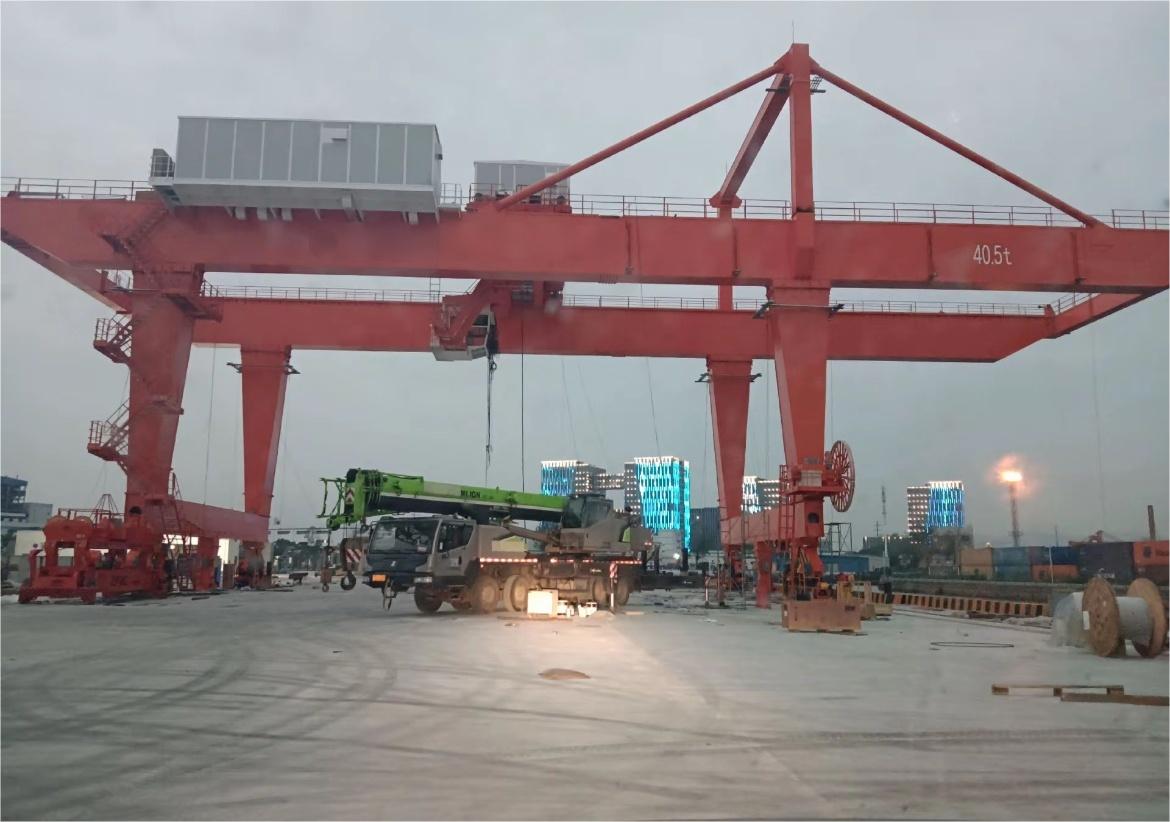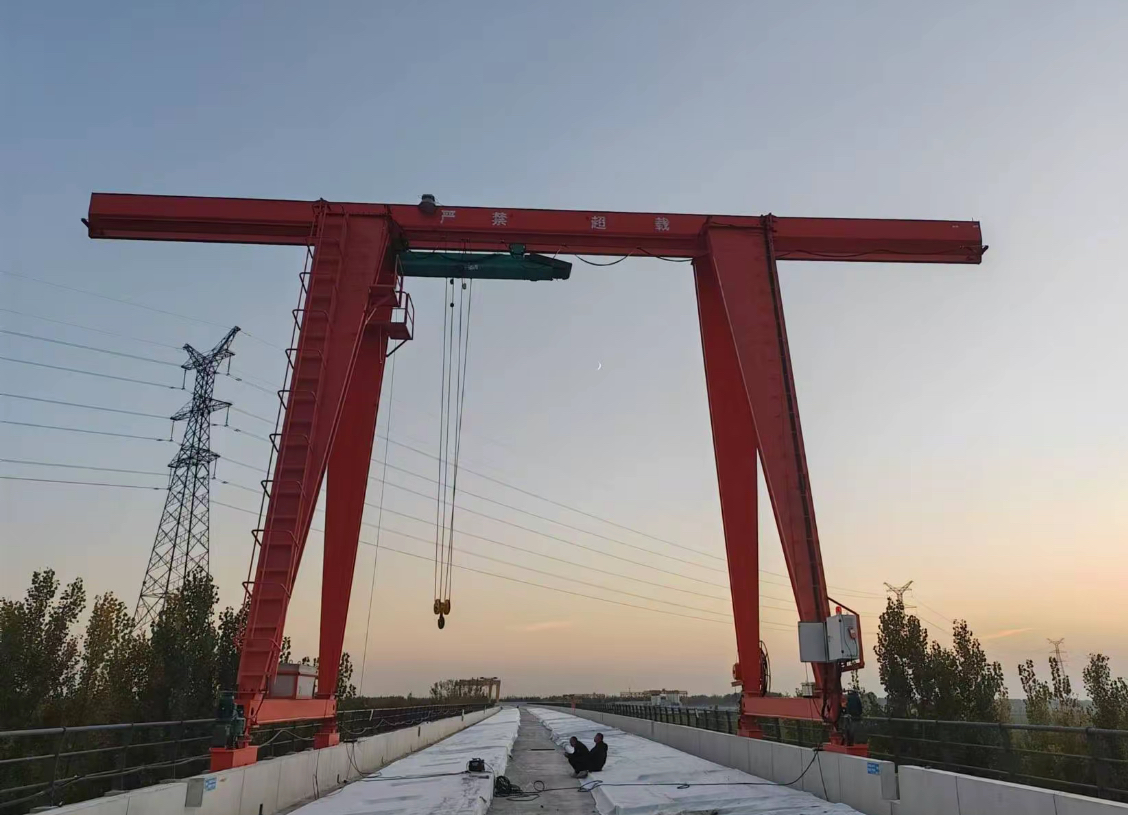Key Factors in Choosing Between Rail-Mounted and Rubber-Tyred Mobile Cranes
Selecting the correct type of crane is a critical decision for any project. The choice between a rail-mounted crane and a rubber-tyred mobile crane depends on a thorough evaluation of several key factors. Each type of crane offers distinct advantages tailored to different operational needs.
Here are the primary factors to consider when choosing this equipment:
Mobility and Flexibility
Rubber-tyred mobile crane: This crane excels in mobility. Mounted on tires and often self-propelled, it can travel between job sites on public roads and maneuver flexibly within a site. This makes the crane ideal for projects requiring frequent relocation, such as construction or multiple infrastructure projects.
Rail-mounted crane: This crane is characterized by its fixed travel path. It operates on a pre-installed track system, which limits its movement to a specific, linear area. This type of crane is best for long-term applications in a confined area, like a shipping port or a large industrial workshop, where its path can be permanently established.
Worksite and Foundation Requirements
Rail-mounted crane: Requires investment in constructing a solid track foundation for the crane, involving civil engineering and higher initial costs. It is, therefore, suited for permanent or semi-permanent fixed locations.
Rubber-tyred mobile crane: More adaptable to the site; it only requires a solid, level surface to operate (sometimes steel plates are used to distribute ground pressure). No complex fixed infrastructure is needed, though road accessibility (e.g., height, load-bearing capacity) is a factor when transferring between sites.
Lifting Capacity and Working Range
Both types of crane can provide lifting capacities ranging from small to extremely large. Typically, however, very large rail-mounted cranes (like gantry cranes) can achieve thousand-ton lifts in a fixed location with excellent stability.
Rubber-tyred mobile cranes also offer very strong lifting capacities, especially all-terrain cranes, but their maximum capacity is often limited by ground bearing pressure and the space available for deploying outriggers.
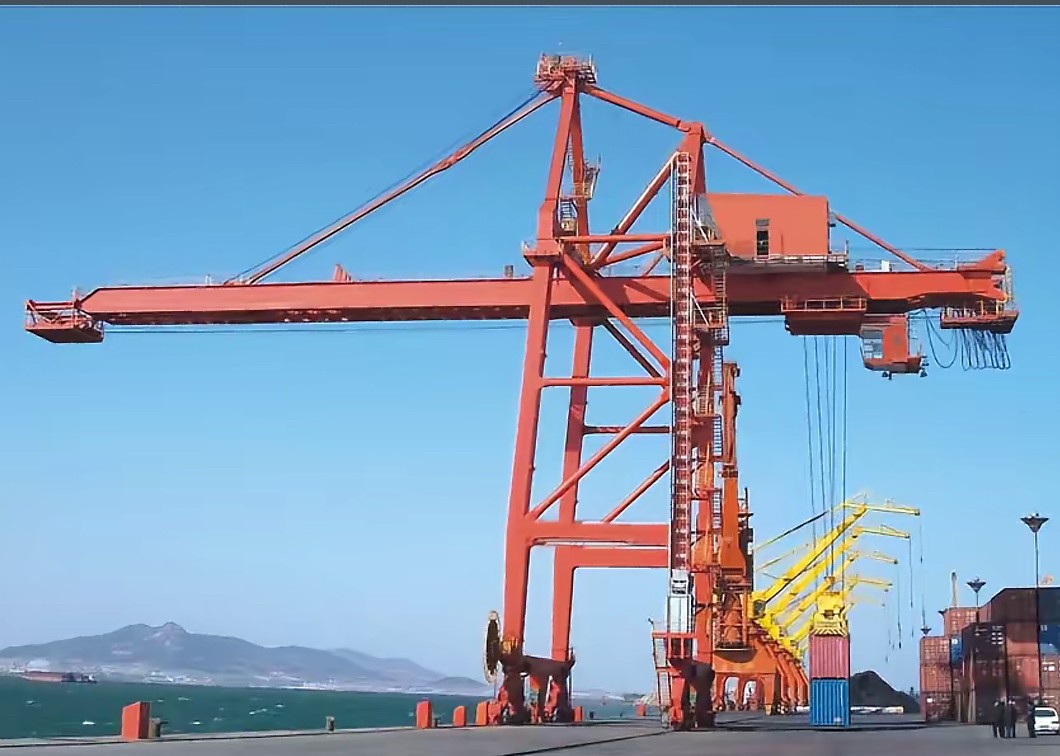
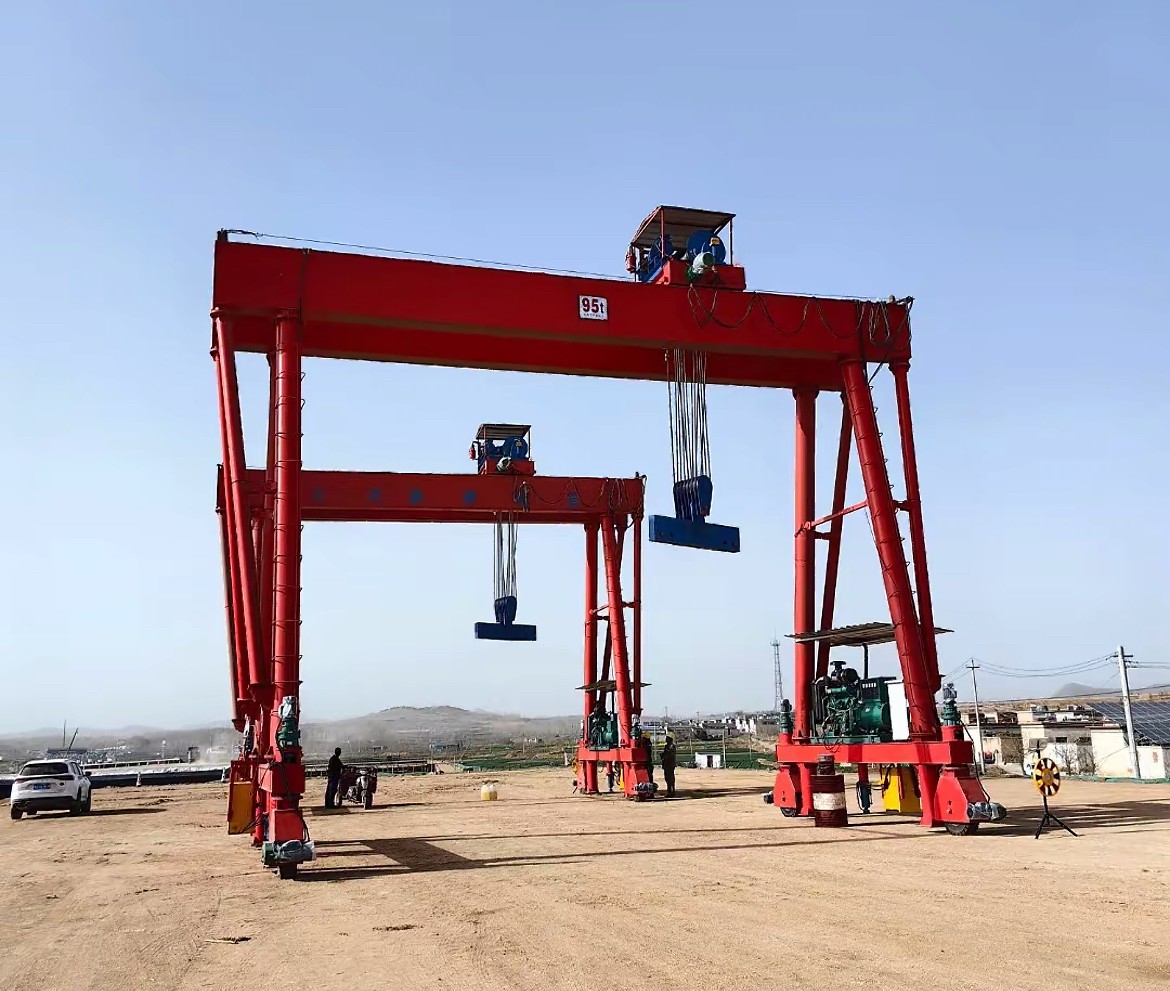
Economic Costs (Initial and Operational)
Rail-mounted crane: High initial investment (including track construction), but once installed, its operating energy consumption is relatively low. Maintenance costs are also primarily focused on the mechanical parts. In the long run, the unit cost of transportation can be lower.
Rubber-tyred mobile crane: The single-unit acquisition cost is high, but it saves on track foundation construction. Its operating costs include fuel, tire wear, and more complex chassis maintenance. If rented, it offers pay-as-you-use flexibility with lower initial capital pressure.
Operational Efficiency and Characteristics
Rail-mounted crane: Highly efficient for operations on a fixed route. It can be integrated with conveyors, hoppers, and other equipment for continuous, high-volume material handling and can be highly automated.
Rubber-tyred mobile crane: Setup time includes extending and leveling outriggers, but its mobility allows it to be deployed quickly for lifting tasks. It is particularly suitable for single-lift, heavy-duty hoisting projects.
Environment and Safety
Rail-mounted crane: Fixed travel path makes it easier to plan safety zones and avoid intersections with other equipment or personnel pathways, resulting in higher safety. It generally has better wind resistance.
Rubber-tyred mobile crane: Requires deploying outriggers for stability during operation, demanding a level and solid ground. Moving the crane requires careful attention to the surroundings, introducing more potential safety risks and necessitating a skilled operator and signal person.
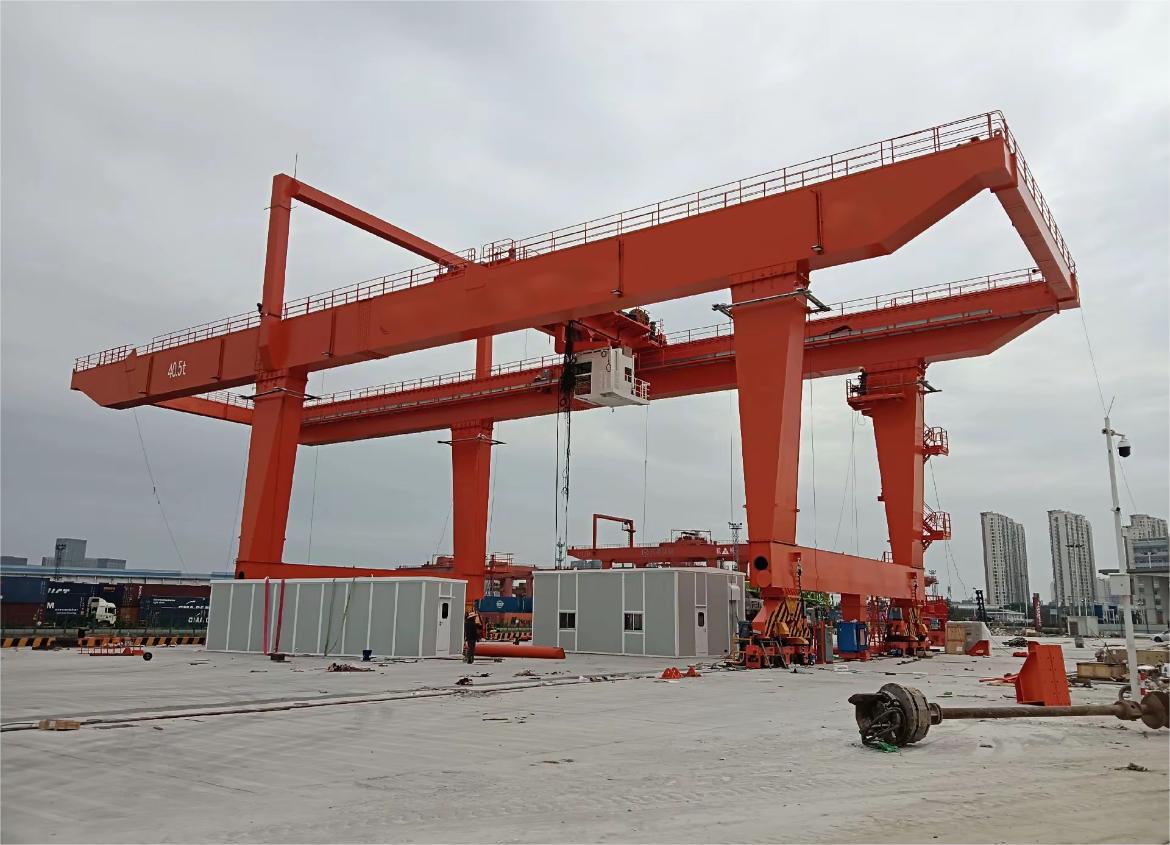
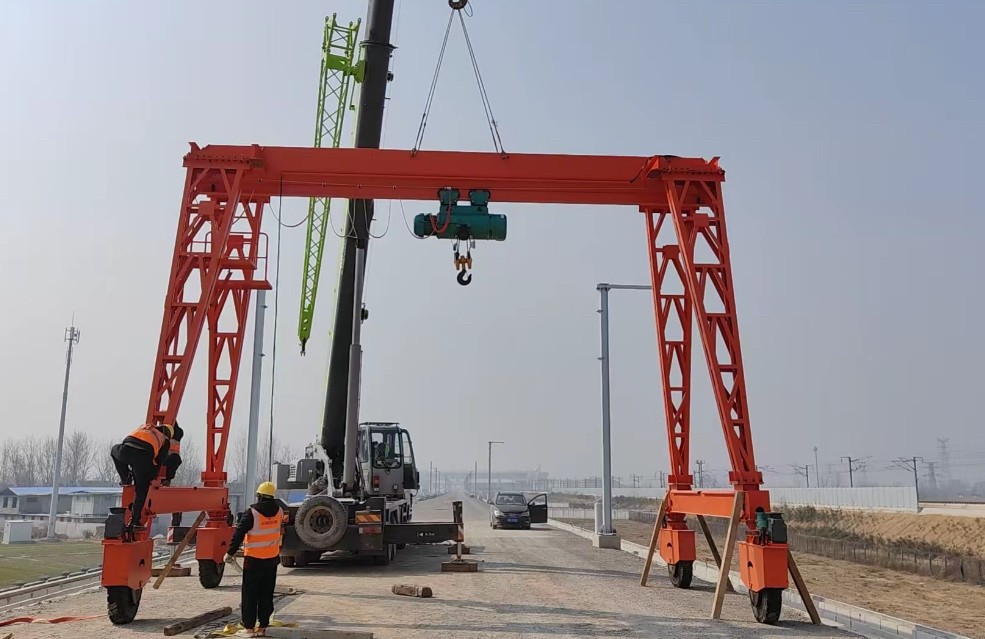
Summary and Comparison Table
| Consideration Factor | Rail-Mounted Crane | Rubber-Tyred Mobile Crane |
|---|---|---|
| Mobility | Low (Confined to track) | Very High (Self-propelled on roads and site) |
| Site Infrastructure | Requires permanent track installation | Requires only a firm, level surface |
| Initial Investment | High (Equipment + infrastructure) | Medium/High (Primarily equipment cost) |
| Ideal Application | Fixed-location, high-volume handling (e.g., ports, factories) | Multiple sites, diverse tasks (e.g., construction, utilities) |
| Operational Efficiency | Highest for repetitive, linear tasks | Highest for mobility and quick setup |
| Safety | High (Predictable movement) | High (Dependent on proper setup and operation) |
Final Decision Advice
The choice between a rail-mounted crane and a rubber-tyred mobile crane ultimately depends on your project type and operational model. If your material handling is concentrated in a fixed area and requires long-term, efficient, high-volume operation, investing in a rail-mounted crane is more economical and efficient. Conversely, if your project requires the crane to move between different locations or has non-fixed work points, the unrivalled mobility of a rubber-tyred mobile crane will be the preferred choice.
